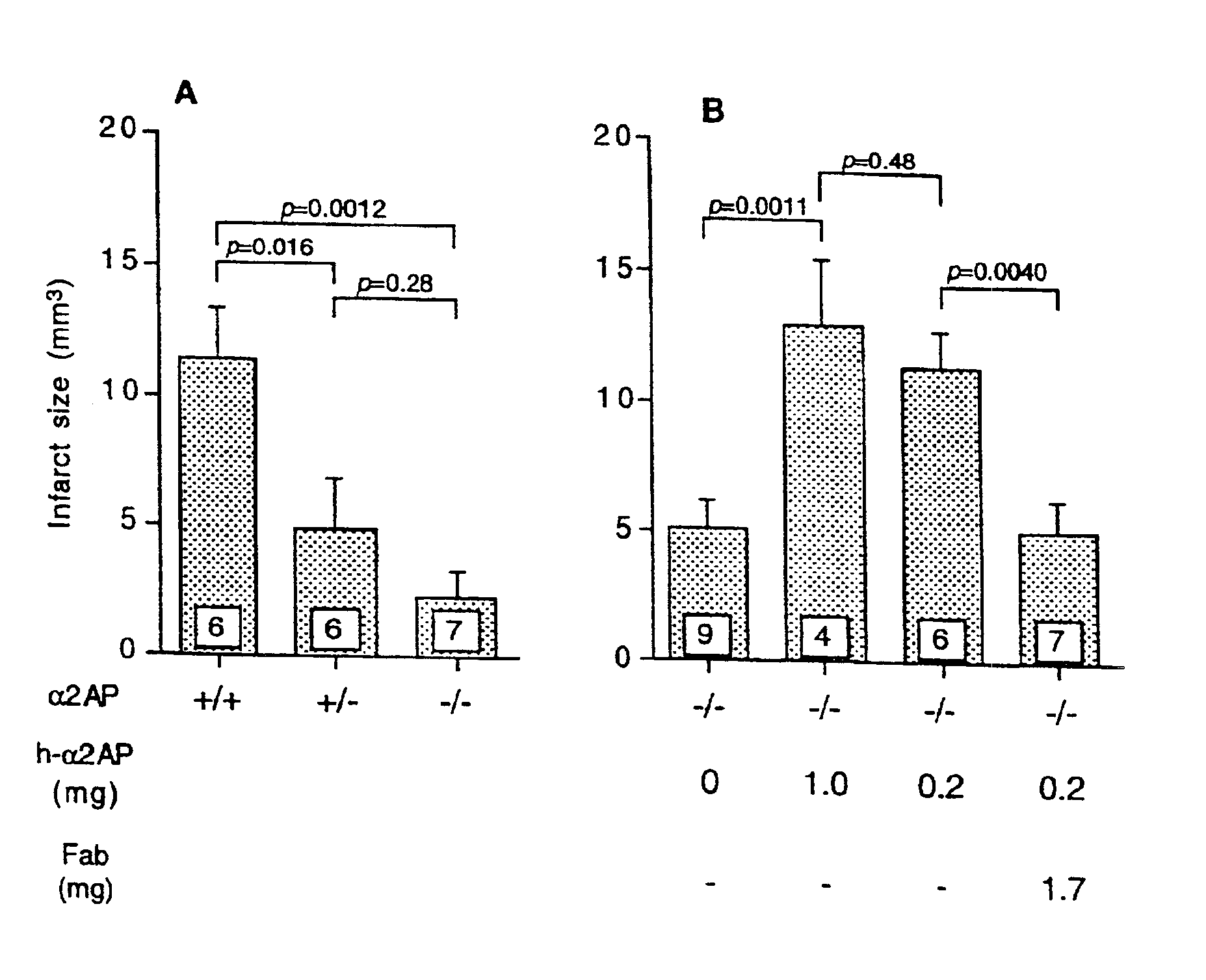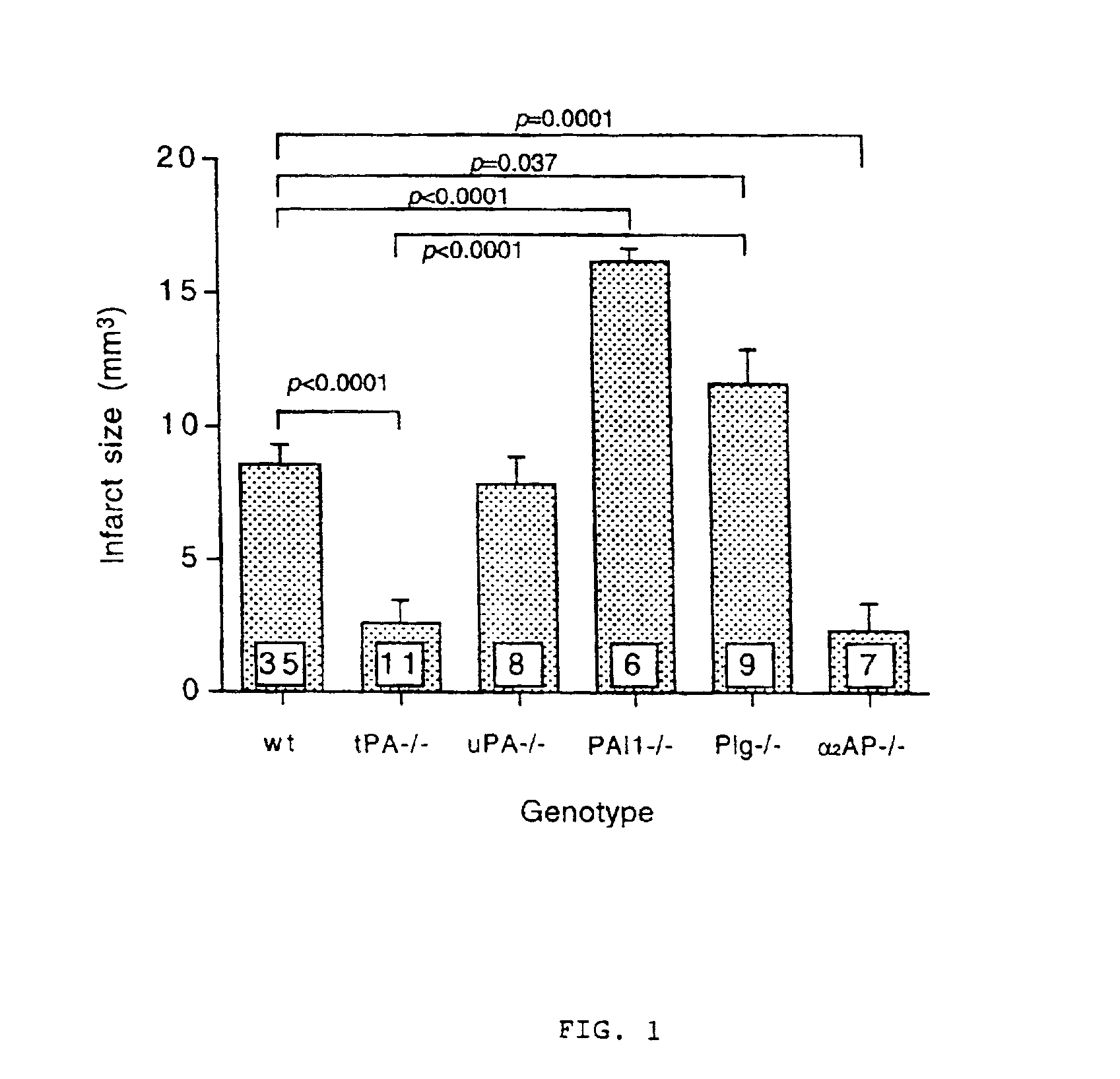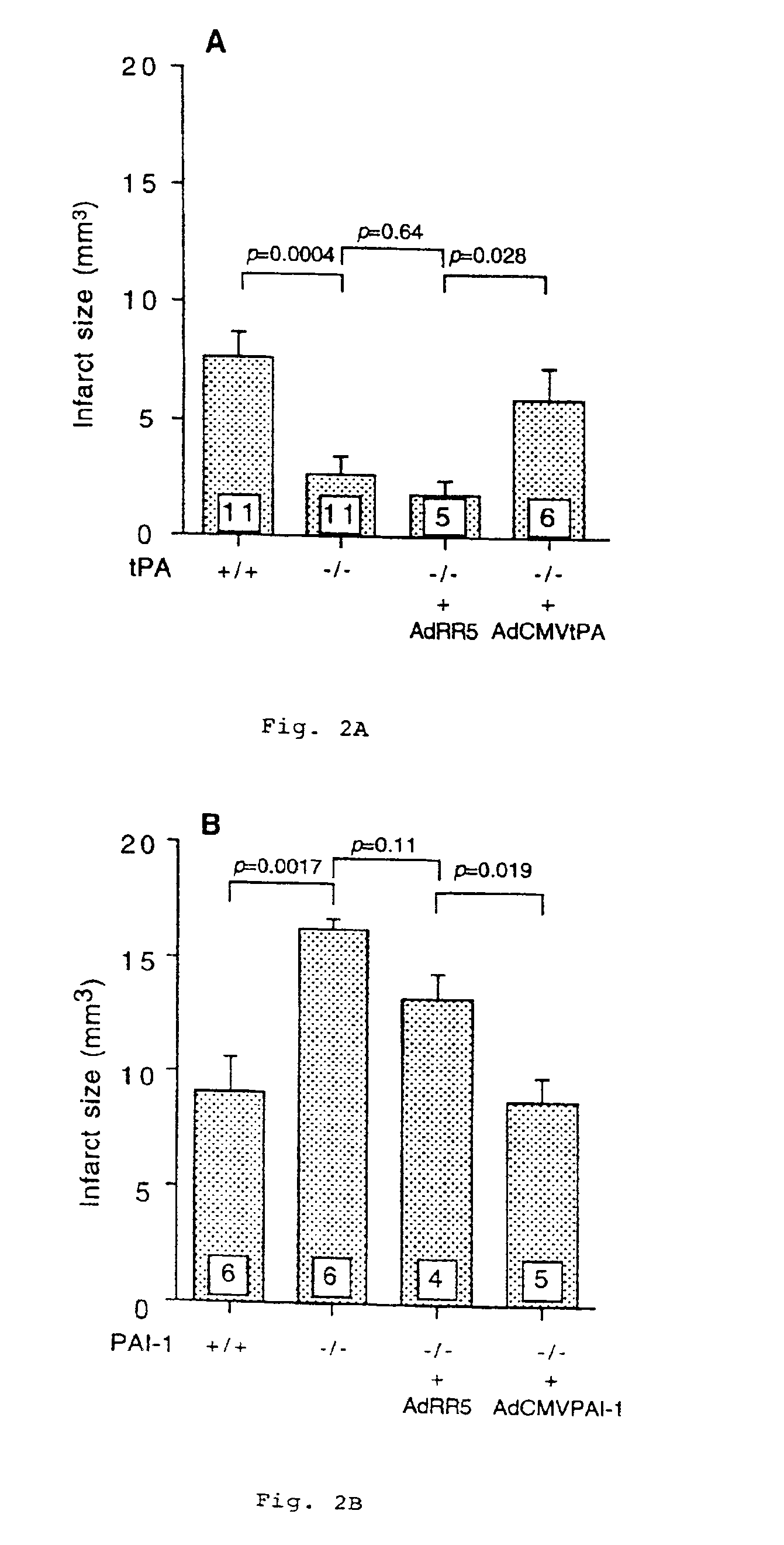Use of compounds that reduce alpha2-antiplasmin in vivo for the preparation of a composition for the treatment of ischemic stroke
a technology of ischemic stroke and compound, applied in the direction of peptide/protein ingredients, extracellular fluid disorder, metabolic disorder, etc., can solve the problems of neuronal cell death and harmful to a subgroup of patients, and achieve the effect of reducing the size of the focal cerebral ischemic infarct, and reducing the concentration or activity of 2-antiplasmin
- Summary
- Abstract
- Description
- Claims
- Application Information
AI Technical Summary
Benefits of technology
Problems solved by technology
Method used
Image
Examples
example 1
Murine Cerebral Ischemic Infarction Model
1. Introduction
[0029]All mice included in the present study were generated and bred at the Specific Pathogen Free Facility of the Center for Transgene Technology and Gene Therapy, Campus Gasthuisberg, K. U. Leuven. Gene inactivation was obtained by homologous recombination in embryonic stem cells targeting the genes encoding tissue-type plasminogen activator (t-PA) (13), urokinase-type plasminogen activator (u-PA) (13), plasminogen activator inhibitor-1 (PAI-1) (14, 15), plasminogen (Plg) (16), or α2-antiplasmin (α2-AP) (17), as previously described. Mice with inactivated genes encoding u-PA receptor (u-PAR) (18) were not included because of the normal results obtained with u-PA deficient mice.
2. Materials and Methods
2.1 Materials
[0030]Human α2-AP was prepared from fresh frozen plasma as previously described (19).
[0031]Polyclonal antisera were raised in rabbits by subcutaneous injection of 200 mg purified human α2-AP suspended in complete Fre...
example 2
Cerebral Ischemic Infarct Size in Mice with Targeted Inactivation of Genes Encoding Plasminogen System Components
[0044]Ligation of the left MCA induced a cerebral infarct with a volume of 7.6±1.1 mm3 (n=11) in wild type mice with a mixed (50%) S129 and (50%) C57BL / 6 genetic background, of 9.3±2.7 mm3 (n=6) in inbred C57BL / 6 mice and of 6.4±1.3 mm3 (n=6) in inbred S129 mice (p=NS versus mixed background, results not shown).
[0045]Inactivation of the t-PA gene was associated with a significant reduction of infarct size to 2.6±0.80 mm3 (n=11), (p3, n=8, p=NS vs wild type).
[0046]Inactivation of the PAI-1 gene was associated with a significant increase in infarct size (16±0.52 mm3, n=6, p1). In mice with inactivated Plg genes, cerebral infarct size was significantly larger than in wild type mice (12±1.2 mm3, n=9, p=0.037 vs wild type)., whereas, conversely, in α2-AP gene deficient mice, infarct size was markedly reduced (2.2±1.1 mm3, n=7, p=0.0001 vs wild type) (FIG. 1).
example 3
Effect of t-PA and PAT-1 Gene Transfer on Cerebral Infarct Size
[0047]Injection of 1.3×109 p.f.u. of AdCMVt-PA in 6 t-PA− / − mice 4 days before MCA ligation was associated with a cerebral infarct size of 6.0±1.3 Mm3, significantly larger than the infarcts in 5 t-PA− / − mice injected with the control virus AdRRS (1.8±0.63, p=0.028) (FIG. 2A). Conversely, injection of 1.3×109 p.f.u. of AdCMVP-AI-1 in 5 PAI-1− / − mice was associated with a cerebral infarct size of 10±1.4 mm3, significantly smaller than the infarcts in 5 PAI-1− / − mice injected with the control virus ALRR5 (13±1.0 mm3, pa 0.019) (FIG. 2B).
PUM
| Property | Measurement | Unit |
|---|---|---|
| Dimensionless property | aaaaa | aaaaa |
| Concentration | aaaaa | aaaaa |
| Size | aaaaa | aaaaa |
Abstract
Description
Claims
Application Information
 Login to View More
Login to View More - R&D
- Intellectual Property
- Life Sciences
- Materials
- Tech Scout
- Unparalleled Data Quality
- Higher Quality Content
- 60% Fewer Hallucinations
Browse by: Latest US Patents, China's latest patents, Technical Efficacy Thesaurus, Application Domain, Technology Topic, Popular Technical Reports.
© 2025 PatSnap. All rights reserved.Legal|Privacy policy|Modern Slavery Act Transparency Statement|Sitemap|About US| Contact US: help@patsnap.com



